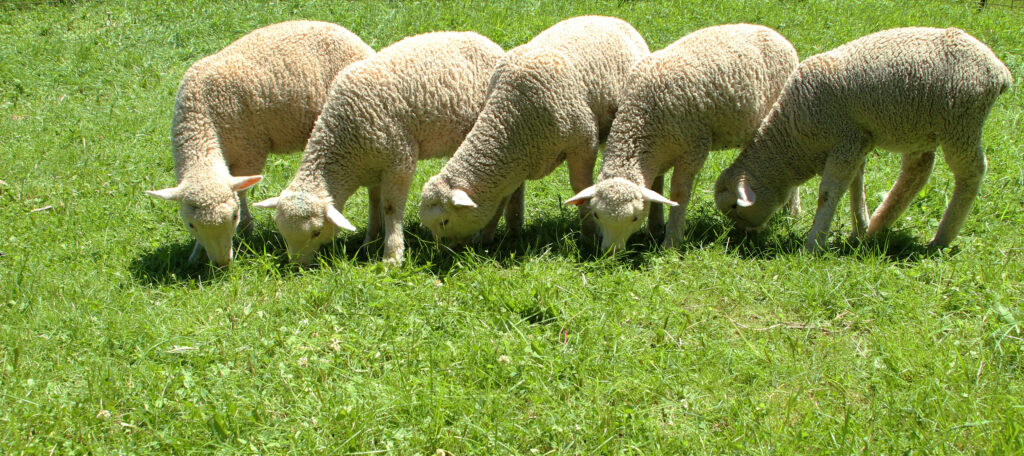American Cormo Sheep Association Breed Standards

The American Cormo Sheep Breed Standards follow the original Downie standards.
BODY: Upstanding open faced sheep of sound conformation and constitution.
COLOR: The Cormo is a white sheep. Small dark spots on nose are acceptable.
HORNS: The Cormo is a polled breed
ACCEPTABLE WEIGHTS: Ewes: 120-160 lbs. Rams: 160-200 lbs.
SKIN: Skin should be loose with some loose neck wrinkles acceptable, but bodies should be free of wrinkles.
FLEECE: Sample from mid-side 17-23 micron and consistent wool with 90% of wool within a two micron range with a staple length of 3.5” to 5.5”. Fleece should be dense soft wool. Fleece weight mature ewe 5-8 lbs. (January 24 2015 The ACSA Board agreed to accept for registration a cormo sheep with finer wool. )
The following breed guidelines were developed by the American Cormo Sheep Association. These guidelines are to be considered as goals for the future of the breed and are to be used as a guideline.
Fleece:
- High Yield
- Uniformity throughout the fleece
- Staple length 3-5 inches
- Dense white wool
- Good elasticity or memory
- Free of hair, kemp or colored fiber
- Micron count 23 or less
Head:
- Rams and ewes have open faces, free of wool
- Wool is carried over the poll, around the ears and down the cheeks
- Ears are small
- Unacceptable traits:
- horns or scurs
- wooly face
- roman nose
- undershot or overshot jaw
- large or pendulous ears
Body:
- A clean top line is desirable, with a slight to no dip behind the shoulders, and the straight line should carry to the hip
- Well-sprung ribs and good body capacity are desirable.
- Freedom from anatomical or physcial defects
- Rams should exhibit a masculine appearance, and have well-developed and uniform testicles
- Undesirable Ram traits:
- undescended testicles or a single testicle and split scrotums
- Undesirable Ram traits:
- Ewes should be feminine in appearance with a good width in the pelvis and well-formed udders
- Undesirable Ewe traits:
- more than two functional teats
- residual teats should be non-existent
- Undesirable Ewe traits:
Legs:
- Front legs should be straight and set squarely under the shoulders
- Hind legs should show a straight line from the pin bone down through the hock to the pastern
- Viewed from the side, the rear cannon bone should be at right angle to the ground and not fall behind the pin bone (sickle hock)
- Pasterns should be clearly upright and hooves should be well shaped
- Unacceptable traits:
- knock-knees
- splayed front or back feet
- cow hocks, sickle hocks, weak pasterns
